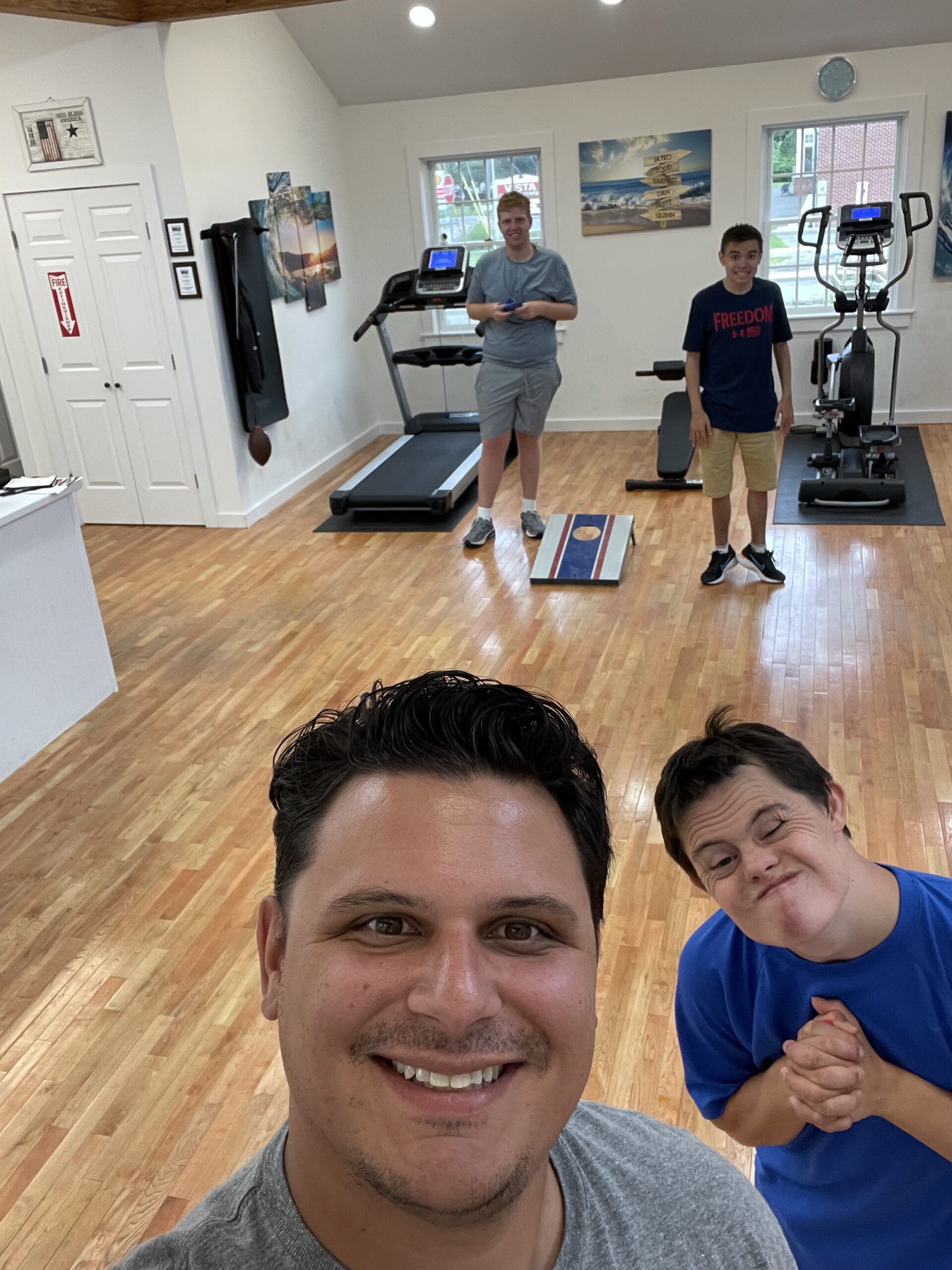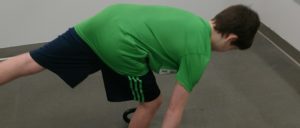The Foundational Social skill

We have all been in this social skill situation. It’s Gym class. Everyone is lined up on the baseline. The gym teacher calls out two students. They will be team captains for today’s activity. You stand on the line while the voice in your head is pleading to NOT get picked last. It doesn’t have to be first, but just. Not. Last.
The captains make their picks. You weren’t last, but you weren’t first either. So now, the voice in your head is begging for the ball to NOT come to you. But of course, it does. And you miss the shot. That feeling you now have, that feeling right there is what we are going to talk about today. More specifically, how that feeling is inherent for a population of students who never even make it to the line to be picked.
Without basic movement efficiency, an entire world of social opportunity becomes closed and even daunting. This renders every other skill for socializing less likely to occur. However, with even the most basic acquisition of movement skills, that world begins to open up.
Often when we think of being social, we imagine skills that involve some form of how we as humans communicate. We look at everything from reading facial expressions, to understanding idioms, to shaking hands, etc. And rightfully so! Communicating with each other is one of the founding pillars of human society.
Because of this, social skills are a huge focus in the field of special education, as well as general populations of individuals with special needs. Cognitive and developmental disorders such as Autism, Asperger’s and Down’s Syndrome, make it difficult to for an individual to navigate complex social situations.
Sarcasm, recognizing facial expressions, understanding humor, etc. are all examples of things that make communication difficult and daunting for these individuals.
But what if I told you that so many of these situations never even have a chance to occur. What if I told you that the naturally occurring situations where an individual would have a chance to practice those skills rarely happen because of the nature of the situations themselves.
Many of these situations in the natural setting would take place at times where kids and teens have an opportunity to socialize with one another (i.e. a playground, gym class, the park, youth sports leagues, etc.). If the basic motor skills necessary to be in those settings are severely limited, just getting there is debilitating.
Imagine the size of the social world cut off for individuals who lack basic motor/movement efficiency. Settings that require the basic recreational skills of throwing and catching, walking and running, climbing and crawling or riding a bike are inaccessible. This prevents the other social skills from having the chance to occur. For example, here is an account from a mother of one of our clients on the Autism Spectrum. Is this something some of you can relate to?:
“For my son, who has always had weak muscle tone and relative weakness in fine and gross motor skills, he has always felt self-conscience about any type of physical activity, particularly when peers were involved, but also within himself. As a result, when he was younger and more of
the play revolved around physical activities and sports, he tended to stay on the periphery or even avoid tho
se types of interactions altogether, preferring to claim he hated sports. No doubt there was truth to this, but he also used this as a defense mechanism. Moreover, since he was too embarrassed to even try, when he finally would, he would see that his skills were much weaker than others who had been participating in some form of movement or sports on a more regular basis. In addition, his “distaste” for anything sports related also translated into a lack of desire over even wanting to learn the mechanics/rules of sports and/or watch sports as a spectator. As a result, he was often left of meaningful chances for social interactions, which then only reinforced his self-consciousness, etc. And while he faced significant improvements in other skills and other areas of his life, this relative weakness hung over him like an albatross. During the school year he used to pray for rain so that his friends would join him inside at lunch rather than be outside playing sports.”
That is why we make the case the movement is one of the most important and foundational social skills. Having basic movement efficiency dramatically increases social opportunities, thus providing settings for skills to be worked on. At BioKinetiX, we have countless situations of students who came to us lacking many of these basic skills. They had trouble making or even wanting friends. Accessing their community or neighborhood was extremely difficult and low self-esteem was common.
With each individual student we slowly and methodically walked them through foundational movement practices like postural control, increased joint mobility, and core muscle development. We then taught them functional movement practices and slowly introduced sports skills. What happened next over the course of time was astounding!

Our students coming to our sessions tired because they were at friends houses the day before playing football. We saw our students try out for and make their JV football team. We have students who are considering seriously wanting to compete on sports teams. And with all of them we saw them develop self-confidence. Trying new things was no longer debilitating, but exhilarating. A type of “grit” begins to develop where moving on to the next task is expected, not dreaded. The following is from another one of our parents who has seen this transformation first hand:
Now that his movement skills have improved and he has been practicing playing some sports, he feels much more like ‘one of the guys’ and, rather than stay inside during lunch, he joins his friends outside playing football, etc. Being there among his friends, as well as with other classmates who join in at different times, he has made more friends and consequently has been invited to more social functions with his peers. So not only has the improvement in movement skills led to an increase in socialization directly by allowing him to more actively participate in physical types of activities, it has opened new avenues for socialization as he has been invited to others’ houses, parties, etc. In addition, the improvement in movement skills and the perseverance needed for him to improve has provided an invaluable boost to his self-image, making him much more willing to try new activities that he otherwise would not have. For instance, this summer at camp he decided to try fencing and found that he not only really enjoyed it from a physical fitness perspective, but from a social perspective as well. The increased confidence from his improvement in movement skills has led to a virtuous cycle of more willingness to try new things socially, more success, etc. Lastly, he has lost weight, which makes him feel better physically, which has also led him to want to participate in more social opportunities and be around his peers more.

Movement skills have the power to create a world of endless possibilities for children and adults who once saw their world full of limits. If nothing else, it allows them to encounter the opportunity to do everything else we as humans do as part of a society, socialize. I spoke with a movement trainer and expert named Ernest Toussaint, who works primarily with neuro-typical individuals. One of things we have discussed endlessly as we learn from one another is the approach to the physical presence of all people needs to be better:
The gist of a person’s physical scheme is the embodiment of their personality. In other words, your framing determines the access you have to the art of expression. So movement is intricate to any kind of expression, be it verbal, be it physical, be it emotional, be it spiritual. Those components don’t change just because the venue does…If you teach a person to access a larger scope
of movement, they’ll have a level or transference of physical, verbal, therefore, social expression. They’re not far removed. The reason typical fitness venues are so dumbfounded is because our society compartmentalizes those things. We treat people socially, psychologically on one level, and then we treat them physically on another level, instead of using all of those venues and correlating them, or using one venue to build a comprehensive person.
It is safe to say Ernest views movement as a therapeutic experience. I have gotten to know Ernest over the years and have even been trained by him. His philosophy is very impactful and I see how that impact has reached all of my students. Giving students the skills of movement has provided access to society in a very meaningful way for these kids. Too often when we think of movement, or fitness, or even physical education, we think of sports. It is so much more than that, and doesn’t even ever have to include sports.
We can help kids on the spectrum, kids with down’s, really, all kids, allow themselves to get picked for gym class game. We can help them just make it into gym class, as so many students are so anxious they don’t even go. Putting an emphasis on movement education and true physical education will open the gateway to extraordinary possibilities for these individuals and bring them closer to the world they make better when they are a part of it.